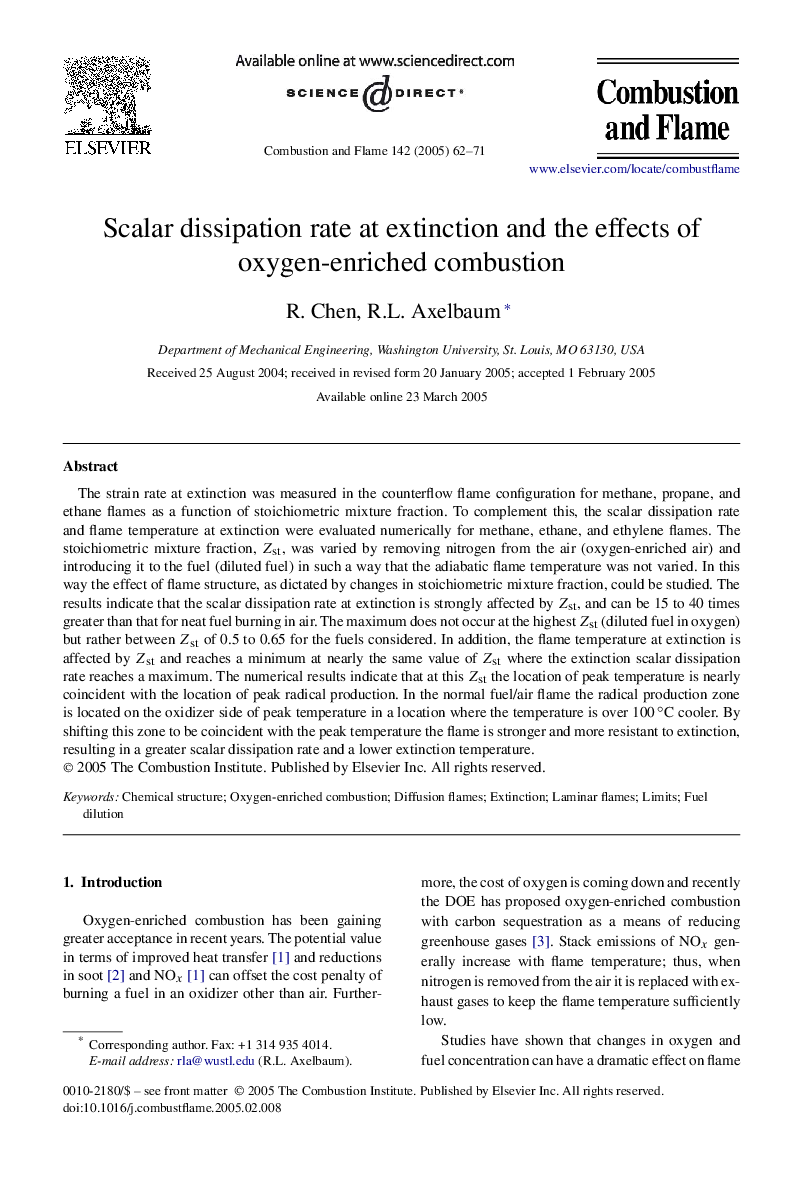| Article ID | Journal | Published Year | Pages | File Type |
|---|---|---|---|---|
| 9624505 | Combustion and Flame | 2005 | 10 Pages |
Abstract
The strain rate at extinction was measured in the counterflow flame configuration for methane, propane, and ethane flames as a function of stoichiometric mixture fraction. To complement this, the scalar dissipation rate and flame temperature at extinction were evaluated numerically for methane, ethane, and ethylene flames. The stoichiometric mixture fraction, Zst, was varied by removing nitrogen from the air (oxygen-enriched air) and introducing it to the fuel (diluted fuel) in such a way that the adiabatic flame temperature was not varied. In this way the effect of flame structure, as dictated by changes in stoichiometric mixture fraction, could be studied. The results indicate that the scalar dissipation rate at extinction is strongly affected by Zst, and can be 15 to 40 times greater than that for neat fuel burning in air. The maximum does not occur at the highest Zst (diluted fuel in oxygen) but rather between Zst of 0.5 to 0.65 for the fuels considered. In addition, the flame temperature at extinction is affected by Zst and reaches a minimum at nearly the same value of Zst where the extinction scalar dissipation rate reaches a maximum. The numerical results indicate that at this Zst the location of peak temperature is nearly coincident with the location of peak radical production. In the normal fuel/air flame the radical production zone is located on the oxidizer side of peak temperature in a location where the temperature is over 100â°C cooler. By shifting this zone to be coincident with the peak temperature the flame is stronger and more resistant to extinction, resulting in a greater scalar dissipation rate and a lower extinction temperature.
Keywords
Related Topics
Physical Sciences and Engineering
Chemical Engineering
Chemical Engineering (General)
Authors
R. Chen, R.L. Axelbaum,
